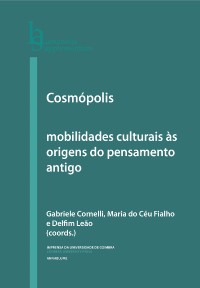Please use this identifier to cite or link to this item:
https://hdl.handle.net/10316.2/40861| Title: | Da natureza cosmopolita de Orfeu | Other Titles: | The cosmopolitan nature of Orpheus | Authors: | Pires, Antônio Donizeti | Keywords: | Orpheus;Orfism;mythemes;Orfeu;Orfismo;mitemas | Issue Date: | 2016 | Publisher: | Imprensa da Universidade de Coimbra Annablume |
Journal: | http://hdl.handle.net/10316.2/40836 | Abstract: | In mythological and literary terms, four are the mythemes that underlie
the narrative of Orpheus: a) his participation in the trip of the Argonauts in search
of the Golden Fleece; b) his marriage with the nymph Eurydice, who is soon swept
away by death; c) his katabasis to Hades, where he went to try to get the beloved
among the dead: he is successful, but his disobedience to the infernal gods causes him
to lose Eurydice definitely; d) his violent death, quartered by the jealous Maenads
of Thrace. In this plot, Orpheus stands out as bringer of the lyre and civilizing hero,
and his power of seduction enchants animals, stones, plants, men and gods. The four
mythemes also point, in outline, to a configuration in terms of literary genres, because
the first is clearly epic and the three remaining explore lyric and dramatic aspects of
the mythic cycle. Anyway, Orpheus as priest would be the founder of the mystery cults
named Orphism, which enjoyed great reputation during the cosmopolitan Hellenistic
period. Therefore, given the fact that the myth of Orpheus made its way also through
philosophy and the arts, the intention of this paper is to trace and ground in it some
migrations of Orpheus through Greek and Latin culture. Em termos mitológicos e literários, quatro são os mitemas que fundamentam a narrativa de Orfeu: a) sua participação na viagem dos Argonautas em busca do Velocino de Ouro; b) seu casamento com a ninfa Eurídice, embora esta logo lhe seja arrebatada pela morte; c) sua catábase ao Hades, aonde vai para tentar reaver a amada dos mortos: ele o consegue, mas sua desobediência aos deuses infernais faz com que perca Eurídice definitivamente; d) sua morte violenta, esquartejado pelas enciumadas Bacantes da Trácia. No esquema, sobressai o Orfeu portador da lira, herói civilizador, cujo poder de sedução encanta animais, pedras, plantas, homens e deuses. Os quatro mitemas apontam também para uma configuração em gérmen dos gêneros literários, pois o primeiro é nitidamente épico e os três restantes conotam aspectos líricos e dramáticos do ciclo mítico. Enfim, o Orfeu sacerdote seria fundador do culto de mistérios que leva seu nome, o Orfismo, que gozou de grande reputação durante o cosmopolita período helenístico da cultura grega. Pelo exposto, dado o fato de o mito de Orfeu ter transitado também pela filosofia e pelas artes, o que se pretende é rastrear, fundamentando-as, algumas de suas migrações pela cultura greco-latina. |
URI: | https://hdl.handle.net/10316.2/40861 | ISBN: | 978-989-26-1287-4 978-989-26-1288-1 (PDF) |
DOI: | 10.14195/978-989-26-1288-1_6 | Rights: | open access |
| Appears in Collections: | Cosmópolis: mobilidades culturais às origens do pensamento antigo |
Files in This Item:
| File | Description | Size | Format | |
|---|---|---|---|---|
| da_natureza_cosmopolita_de_orfeu.pdf | 230.58 kB | Adobe PDF |  |
Items in DSpace are protected by copyright, with all rights reserved, unless otherwise indicated.
